Warning: I’m not a heavy artillery user, so I may be omitting some roles. Be more skeptical than with the rest of the posts in the guide.
There are broadly three types of artillery and three jobs that artillery does. The types are MLRS, howitzer, and mortar; the jobs are dealing damage, demoralizing, and spreading smoke.
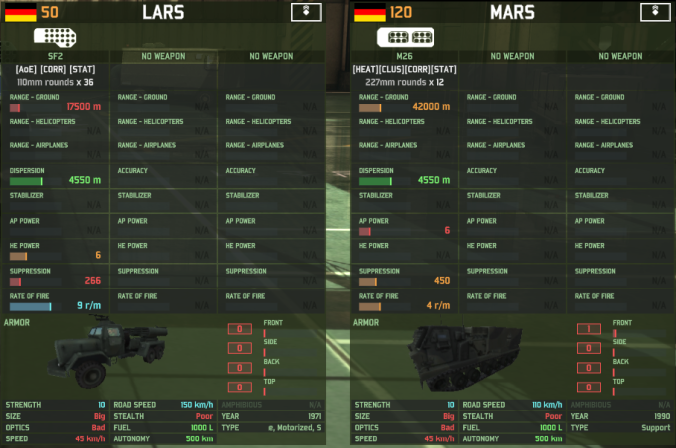
MLRS is artillery that shoots lots of rockets in a short period of time. Some spread napalm, others cluster – these effects are the same as what I described in the plane section. Napalm is generally not lethal enough to kill but may block off sight lines and force units to move out of it, cluster does some morale damage and is mostly dangerous to thin-skinned support vehicles.

50pt Chinese BM-24 softening a defensive line. Except for very lucky direct hits, damage is negligible.
You’d expect the last type of MLRS, pure HE MLRS, to be used for the damage its rounds can inflict, but they’re surprisingly harmless. Instead, its main job is to suppress groups of enemy units just before an attack. Moving the MLRS closer to the frontline shrinks the dispersion of its salvo – while most pieces can reliably panic a fairly large area simultaneously, shooting all the way from your base may spread the hits out too much and leave some enemy units untouched.
If you know you’ve panicked everything, you can stop an MLRS mid-salvo and use the rest to target a separate area. This is especially useful for units with long salvos. The buratino has such a long salvo with so effective individual rockets that you can get 5-6 powerful strikes out of one reload if you babysit it enough.
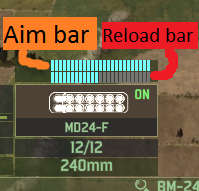
As an aside, if it frequently seems to you like your artillery quickly reaches 50% ready to fire and then gets stuck, that’s because the bar above each weapon isn’t one indicator split in two rows, it’s two entirely separate indicators. I’ve tried to explain how reloading works here.
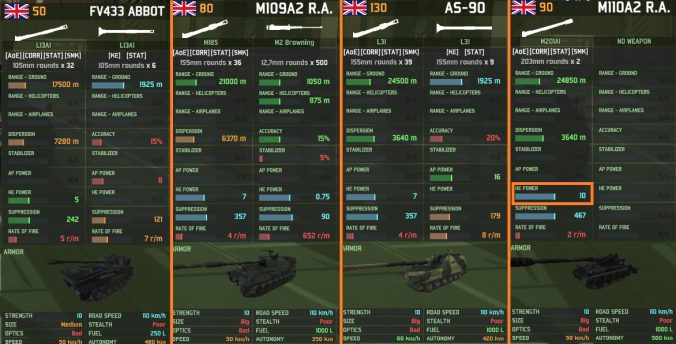
From the left: spammy, useless, modern FCS, sniper
The next artillery branch are the howitzers. This is a messy one, in big part because the most important stats are not listed in the armory at all. These important stats are salvo length and aim time.
There’s broadly three types of howitzer. One is the spammy regular piece, lobbing normal shells with decently long salvos and a very long (~30s) aimtime before each salvo. The low price and long aim time makes these mainly useful for shelling towns and other static positions.
Modern FCS artillery is a sidegrade to spammy artillery, costing at least twice as much with little increase in firepower. The advantage in modern FCS is the 10-second aimtime, making these a lot more flexible and usable on a dynamic battlefield. Keep in mind that modern FCS varies wildly in effectiveness between nations, with the BKAN-1C being three times as effective as a Paladin and rivaling spammy artillery in shots fired for the price. For details, test yourself or check the hidden stat spreadsheet, tube artillery page.
There’s usually a unit sitting between spammy and modern FCS, a mix between the two – both expensive and with long aimtime. This is as useful as it sounds.
Finally, there’s what some call sniper artillery – pieces with usually very short salvos, the aimtime of spammy artillery and the cost of modern FCS, but firing shells between 9 and 10 HE. I believe these are mainly used for CV snipes as the blast range maximizes the chance of blindly killing something.
MLRS and howitzers are fairly niche; it takes big unit concentrations for it to be worth it to buy a stunning unit instead of an extra tank, and buying howitzers to rack up kills takes a while to pay off. The next artillery type, mortars, is not niche. Mortars are easily the most important part of the artillery tab, being simultaneously precise, fast to aim, and cheap. They’re used effectively for both panicking soft targets and spreading smoke.
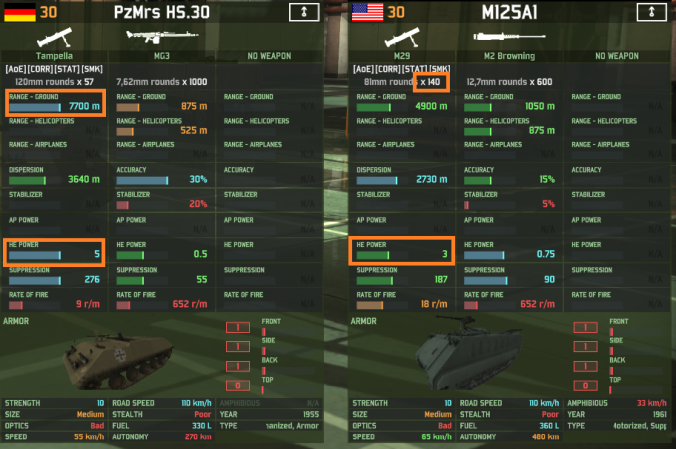
The damage and panic role of mortars is obvious – target positions you see AA missiles emerging from, target infantry that is fighting your own, target spotted enemies. High-HE mortars do better here. Using mortars for damage is fairly high-micro, so it’s mainly done by very fast players who have micro to spare or when playing destruction (as destruction is less demanding on that front).
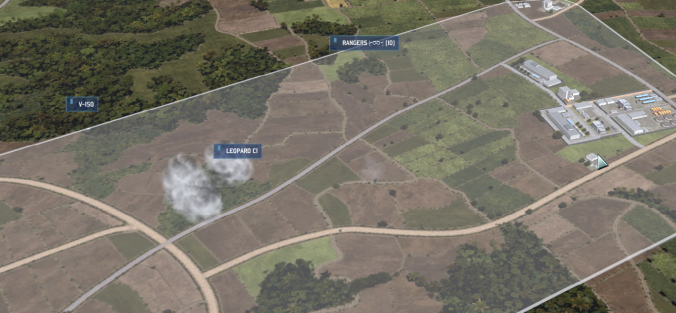
Mobile forest.
The harder to master aspect of mortars is smoke. The smoke puffs are basically small pieces of forest, with the middle being impossible to shoot through and the outer part providing penetrable concealment. There are multiple ways to use smoke, but for me the main issue wasn’t coming up with uses for it, but rather remembering that smoke is an option at all, when the challenges of enemy ATGM or crossing open field came into the picture. Buying a mortar at the start of the game and binding it to a main control group (1-3) helps here. You could even make a macro for smoke.
For smoke, it doesn’t matter that much which type of mortar you use – 3HE makes smaller puffs but fires faster. If there is no price difference, take 5HE for the greater range, otherwise it depends on how much you value the cost savings vs the convenience of range. Smoke almost always lasts 90 seconds.
in multiplayer, do you invest in supply depots? I never used mortars for smoke in single player because i found it more convenient to park my howitzers near the depot and not having to worry about resupplying them.
I have a post with my thoughts on fobs here: https://honhonhonhon.wordpress.com/2016/09/04/do-you-need-fob/
In short, I think most people overuse them and they are generally a mistake in 1v1. They are stronger in larger games but people still trend to buying more than they need.
Howitzers are unusable for smoke because of their aim time. A 10s aim time mortar can be used to keep smoke on top of your superheavy as you move it around, or to respond to enemy pushes. A 30s aim time howitzer is just too slow, and the 10s aim ones cost 4x as much as your average mortar while still having longer travel times and 30s reload times.
Most mortars come with enough ammo and you don’t need to resupply them for a while. Even if you just buy a new mortar when the old one runs out of ammo, you’re still saving money compared to the expense of a howitzer (2x-4x the cost of a mortar), even before you add a fob (2x the cost of a mortar). But the main thing is that mortars are simply way faster and more reliable at spreading smoke.